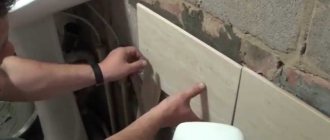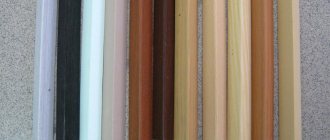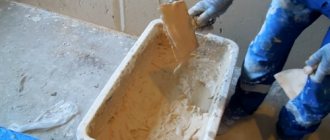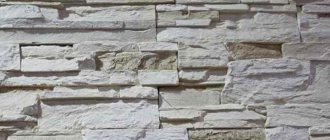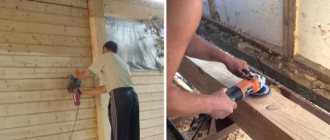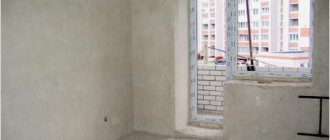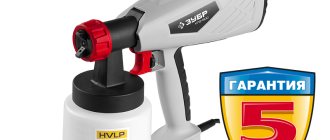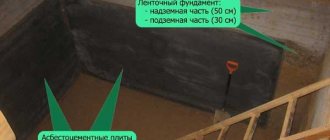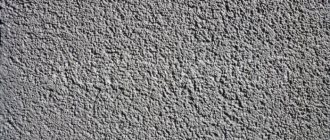For every apartment owner, from time to time there is a need to hang a picture, a shelf on the wall, or install a new lamp on the ceiling. In each case it may be necessary drilling a hole in concrete.
Concrete is an excellent building material. It is strong and durable . But if you need to drill holes in it, its properties cause difficulties.
To cope with this matter, you need to take into account some features of working with concrete .
Drilling tool
Concrete drill
Organization of work on making holes in concrete requires a special approach, which involves choosing suitable tools and special drills (ordinary drills are not suitable in this case). The following tools are best suited for this purpose:
- Choosing a drill
impact drill (impact drill); - Drill made of tungsten carbide and cobalt alloy;
- Diamond drill.
A rotary hammer or perforator provides a rotational and translational movement of the drill bit (drill bit), which makes drilling concrete much easier.
Some experts believe that in most everyday situations this can be done with a regular drill, which does not have an impact function. But in this case, to successfully complete the work, you will need to use a special metal pin, the thickness of which is approximately equal to the diameter of the planned passage. With the help of this pin, the intended drilling site is “packed”, and the concrete periodically breaks as it sinks into the wall. Several small holes can be drilled with a regular drill.
User guide
An important point for a beginner who wants to master the tool is to study the aspects of using a drill, safety measures and other nuances. It is also worth clarifying the purpose of each button so as not to be distracted while working.
As a safety precaution, it is recommended to use:
- work gloves;
- earplugs;
- protective glasses.
An impact drill or rotary hammer creates high vibrations, which can rub your hands during prolonged use. Special gloves will help avoid this. They are made of a thick layer of fabric that will protect the skin from the formation of calluses, and will also prevent you from getting burned by accidentally touching the heated areas of the instrument. Earplugs will protect your hearing from the loud sounds of crushing walls, and glasses will protect your eyes from flying crumbs. Large repair work, as a rule, leads to heavy dust in the room, in which case a respirator will be an important means of protection.
Concrete drill bit
Drills, drill bits, bits for concrete
The choice of components is of great importance. The winning tip is T-shaped. If you want a truly durable tool, buy drills from domestic manufacturers, where the ratio of metals is 9: 1; if you buy a drill made in China, be aware that there are less hard alloys.
Hardened drills have a black tint, while titanium-coated drills are gold. Titan is much stronger.
Drilling concrete
For a drill, select a drill with a shank in the shape of a polyhedron or cylinder; for a drill, select a drill marked SDS-plus, SDS-max. Drill bits and bits are not interchangeable: they can only be installed on another tool using an adapter.
| Screw | Designed for making deep transitions. Their length can be up to 1 m. |
| Inclined | Allows you to quickly create small diameter holes. |
| Spiral | Used for drilling large diameter passages. |
READ How to remove the anchor from a Makita 2450 rotary hammer
But the fact is that with the help of drills they make holes with a diameter of only 4 cm. To drill large passages in concrete, concrete crowns are used to stamp drills with hard alloys. Their diameter is 35-120 mm. However, the most popular are crowns with a diameter of 68 mm. They are ideal for cutting holes under the socket. There are expanders on sale that allow you to make holes deeper than 15 cm.
If a drill is used, tungsten carbide alloy bits should be selected. The ability to work with such crowns is determined by the power of the drill. It should be more than 1000 watts.
Reviews
“Correct advice about working as a hammer drill. I had such a case. Drilled concrete with a hammer drill. The drill pinched and hit my head painfully. Now I don’t put pressure on the hammer drill, I hold it in front of me, and don’t lean on it with my shoulder.” Victor, Novosibirsk
“My apartment has concrete walls. I make all the necessary holes, even very small ones, using a hammer drill, and an impact drill is a weak assistant.” Kostya V., Volgograd
“I work with a hammer drill this way. I mark a hole and drill it. The wife turns on the vacuum cleaner, and all the dust enters the vacuum cleaner bag. The only caveat is that the vacuum cleaner should not be water-powered. For 20 years there have been no problems with drilling holes in the wall.” Ludwig Goldberg, Omsk
“I worked for a long time in a company developing hydraulic tools and I can say that hydraulics is a leader in any field of construction. Those who were engaged in it will not engage in anything else.” Kuzmich Oleg, Zaraysk
- Previous post We calculate the cost of building a house from aerated concrete: prices for work and materials
I don’t really need a hammer drill at home, I can do without it. In order to make holes in the wall, I used an impact drill and a Pobedit drill bit. It is important here to periodically cool the drill, it gets very hot. I wet it with tap water.
Today there is a large assortment of household hammer drills that have little power, but for housework I would advise choosing this one. Almost all models have a mode for switching to normal drilling. I have exactly this instrument and I am very pleased with it.
How to work with a regular drill with a rod drill
Diamond drilling in concrete
Once all the accessories needed for the job are ready, you can begin the hole preparation procedure . Before starting the procedure, we recommend reading the following expert recommendations:
- When working with a conventional drill, it is necessary to ensure that the drill does not overheat, for which it is periodically cooled in cold water.
- After penetrating the concrete a little, use the same pin you want to insert into the cavity and hit it with a hammer several times (while rotating).
- Then drill a little more and repeat the same steps using the pin.
How to drill a reinforced concrete wall
Help me drill a wall! Reinforced concrete. Using a regular drill, a regular drill, the Sturm was drilled 2 cm, and then it stuck with a stake. I realized that I had hit the iron: I drilled more holes around it - there was no difference, 2 cm and the stake stood up. I went and bought a set of Sparta iron drills - zero movement, not even moving a millimeter. So what to do? Are the drills bad? What could there be in the wall?
Pluto, Then you have run into crushed granite stone. A hammer drill, no, you don’t know that. How I love my masochistic neighbors cutting reinforced concrete with a drill.
Pluton wrote: Using a regular drill, a regular Sturm drill, I drilled 2 cm, and then the stake stuck. I realized that I had hit the iron: I drilled more holes around it - there was no difference, 2 cm and the stake stood up. I went and bought a set of Sparta iron drills - zero movement, not even moving a millimeter. So what to do? Are the drills bad? What could there be in the wall?
They drill not with an ordinary drill, but with at least a Pobedit drill, better with an impact drill, or even better with a hammer drill, maybe the neighbors have one, they’ll give you one hole.
Ok, I’ll call my husband for an hour; there’s no point in buying a hammer drill for two holes.
I finally found myself in a dilemma. Others, please advise. I bought a set of Chinese pobedit drills; I haven't moved a single millimeter. They don’t take the wall... it seems like I’m pressing hard. I thought about it and realized that it was time to buy something more powerful than my Sturm for the house. What do you recommend for my purposes: an impact drill or a hammer drill? Or maybe you can tell me about the model? Of course, everything is for occasional home use. I changed my mind about calling my husband for an hour. I still drill something myself from time to time.
Photos of the new drills:
Pluto wrote: Chinese pobedite drills; I haven't moved a single millimeter. They don’t take the wall... it seems like I’m pressing hard. I thought about it and realized that it was time to buy something more powerful than my Sturm for the house. What do you recommend for my purposes: impact drill
SO we don’t know what goals you are pursuing?? If I were to make one hole in an apartment, I would buy an impact drill. If you buy a device for your home and you need, say, to remove a concrete threshold, then naturally, a hammer drill.
EVERYONE living in a concrete apartment should have a hammer drill. What to buy is the second question. Buy something that you don’t mind spending money on, but a very cheap no-name is still not worth it, spare your hands. Yes, and it will break. A drill is definitely not for concrete.
I looked at the prices for Leroy Merlin, they don’t differ much in price. Rotary hammers are not much more expensive than impact drills.
Pluton, maybe change the task? If you can’t drill through the wall, then you can try changing the conditions, using a different option for fixing something to the wall! Make a suspension from the ceiling, attach legs and place it on the floor, etc. Use the option of fastening with gluing to the wall - you will be surprised at the strength of adhesives now available! Another option is, as in Soviet times, hold a punch in your hands and hit it with a hammer until you move deep into the wall! Well, or find a hammer drill from a neighbor and make your holes in 2 minutes.
In general, I am engaged in the construction of websites and online stores.
Pluton, Concrete with granite crushed stone - hammer drill plants drill bits. Options:
- breakdown with a hammer, penetrated 2-3 mm - got it with a drill with Pobedit surfacing, and so on gradually; Tubular drills with diamond coating;
- hammer drill with drills.
Pluton, since your walls are concrete, they haven’t come up with anything better than a hammer drill yet! If you choose for your home, IMHO, there is no better Makita. Just immediately buy a clamping chuck for drilling. Or (if money allows) quick-detachable. You will not regret.
How to drill a concrete wall using a hammer, drill - for drainage
The walls and ceilings of modern buildings are often made of monolithic reinforced concrete slabs. It is well known that concrete is a high-strength material, the processing of which requires knowledge of its processing technologies. In particular, a concrete wall must be drilled using a special tool: a drill or a hammer.
READ Is it possible to use a hammer drill as a mixer?
Content:
- Drilling tool
- Drills, drill bits, bits for concrete
- Video: SDS-max, SDS-plus drills
- How to work with a regular drill with a rod drill
- Diamond drilling method
- Video: diamond drilling technique
- Drilling tips
Expert's comments
Now you know how and with what help to make a hole in the wall, but if you do not have experience in such work, first ask one of your more experienced friends to teach you how to use the equipment, otherwise the walls and the tool may become much less functional than they were before the work began.
Also remember that even though our grandfathers and great-grandfathers were able to carry out repair work of any kind and complexity with the help of one hammer, you and I still live in peacetime, when there is no shortage of tools. Therefore, if you decide to get a hole in the wall, but you only have a low-power drill at hand without a hammer function, you shouldn’t torture the walls and the device, but it’s better to wait a little and ask your friends about the presence of a hammer drill - you’ll probably be lucky. Oh yes, if you live in an apartment building and you are familiar with such a nuisance as having neighbors, then be merciful to them and do not start your drill exercises with the first roosters - they will be grateful to you.
Drilling tool
Concrete drill
Organization of work on making holes in concrete requires a special approach, which involves choosing suitable tools and special drills (ordinary drills are not suitable in this case). The following tools are best suited for this purpose:
Drill selection
impact drill (impact drill);
A rotary hammer or perforator provides a rotational and translational movement of the drill bit (drill bit), which makes drilling concrete much easier.
Some experts believe that in most everyday situations this can be done with a regular drill, which does not have an impact function. But in this case, to successfully complete the work, you will need to use a special metal pin, the thickness of which is approximately equal to the diameter of the planned passage. With the help of this pin, the site of the intended drilling is “packed”, and the concrete periodically breaks when immersed in the wall. Several small holes can be drilled with a regular drill.
General provisions
Let's first look at why a concrete wall cannot be drilled using conventional methods. And everything lies in the structure of such a durable material:
| Component name | Technical features |
| Cement | Binds all ingredients, turning to stone as the solution solidifies |
| Sand | Increases density and reduces porosity |
| Gravel | Gives the structure compressive strength |
As you can see, the action of all components is aimed at increasing the strength qualities of the finished product. Particularly critical for conventional drills is crushed stone, which instantly dulls their cutting edges.
Concrete is even used to create bomb shelters
And despite all the complexity of processing a concrete wall, the need for this can arise very often.
For example, if you need:
- Hang the shelf on the wall or any other furniture interior.
Photo of shelves screwed to the wall
- Finish with plasterboard.
The metal frame under the gypsum board is mounted on concrete
- Carrying out electrical wiring, installing new sockets and switches . In this case, to lay the wire, reinforced concrete is also cut with diamond wheels.
Creating cable grooves
- Plumbing connection.
Diamond drilling of holes in concrete for plumbing fixtures
Drills, drill bits, bits for concrete
The choice of components is of great importance. The winning tip is T-shaped. If you want a truly durable tool, buy drills from domestic manufacturers, where the ratio of metals is 9: 1; if you buy a drill made in China, be aware that there are less hard alloys.
Hardened drills have a black tint, while titanium-coated drills are gold. Titan is much stronger.
Drilling concrete
For a drill, select a drill with a shank in the shape of a polyhedron or cylinder; for a drill, select a drill marked SDS-plus, SDS-max. Drill bits and bits are not interchangeable: they can only be installed on another tool using an adapter.
| Screw | Designed for making deep transitions. Their length can be up to 1 m. |
| Inclined | Allows you to quickly create small diameter holes. |
| Spiral | Used for drilling large diameter passages. |
But the fact is that with the help of drills they make holes with a diameter of only 4 cm. To drill large passages in concrete, concrete crowns are used to stamp drills with hard alloys. Their diameter is 35-120 mm. However, the most popular are crowns with a diameter of 68 mm. They are ideal for cutting holes under the socket. There are expanders on sale that allow you to make holes deeper than 15 cm.
If a drill is used, tungsten carbide alloy bits should be selected. The ability to work with such crowns is determined by the power of the drill. It should be more than 1000 watts.
READ Which Screwdriver Is Best For The Home
The nuances of proper concrete drilling
It is necessary to start drilling at low speeds, then the tip will not bounce off the wall. When the drill goes 4-5 mm deep into the wall, the speed can be increased.
Some nozzles are watered with cool water or special liquids before starting work to prevent their deformation.
Some craftsmen first put a plastic cup on the drill, which prevents dust and small particles from flying away. But this method makes it difficult for those who perform such manipulations for the first time to control the process. As an alternative, you can turn on a regular household vacuum cleaner while working: dust will fly less.
It is recommended to operate a low-power drill for no longer than 15 minutes, then the tool needs to cool down. 10 minutes is enough for a break.
There is no need to press the drill with your hands into the wall as hard as you can. This will cause the tool to move violently and the attachment may break.
If you plan to make a through hole, then when approaching the opposite edge of the wall, the speed must be reduced, otherwise the drill may damage the monolith by breaking off a piece from it.
When drilling a wall with reinforcement, work begins with a concrete attachment. Having reached the layer of reinforcement, it is replaced with a nozzle for metal. After drilling, the attachment is again changed to a concrete drill.
The drill must be inserted into the chuck all the way. Do not try to increase the length of the nozzle through partial installation: this may lead to injury.
To prepare the holes before installing the dowels, choose a drill of a larger diameter, and make the hole longer so that the resulting dust does not interfere with the installation of the dowels.
If you plan to make a hole with a large diameter, first drill the hole with a thin drill, and then widen it with a drill of a larger diameter. This increases the stability of the equipment and makes work more accurate.
The older the concrete wall, the stronger it is, as concrete gains strength over time. Drilling surfaces in new houses is easier than in old ones.
If the tool does not have a drilling depth limiter, then a mark is made on the drill itself with masking tape or a pencil - how deep to drill a concrete wall.
How to work with a regular drill with a rod drill
Diamond drilling in concrete
Once all the accessories needed for the job are ready, you can begin the hole preparation procedure . Before starting the procedure, we recommend reading the following expert recommendations:
Peculiarities
Concrete structures are highly durable, so drilling them yourself is quite difficult.
This is due to the fact that crushed stone is used to create concrete products, and when you come across it while drilling, the process becomes very difficult.
The need to drill a concrete wall arises quite often; this is necessary for installing shelves, cabinets, air conditioning, gluing wallpaper, attaching a lamp, when attaching insulation, or when plastering walls to attach beacons.
There are several ways to solve this problem:
- using a hammer drill or a powerful impact drill;
- an ordinary electric drill or screwdriver;
- diamond drilling.
It should be remembered that for walls made of relatively soft materials, it is impossible to use pobedit drills, since the holes will be uneven and the wall will collapse. It is also impossible to work with metal with such a tool.
To create large-diameter holes or cut through a doorway, diamond-coated annular drills are used. To use such a tool, it is necessary to use special installations; they allow you to make holes with a diameter of up to 250 mm.
Since the cost of such equipment is high, it is easier to hire specialists or you can rent it.
Diamond drilling method
Before you drill into a concrete wall, for example for a socket, it doesn't hurt to become familiar with another effective method for making holes. We are talking about the so-called diamond drilling, which allows you to quickly and without unnecessary dust cope with the task. Keep in mind that you will need special equipment, which is a set consisting of an electric motor, a stand attached to the base, and a core.
The design of such an installation provides for the possibility of cooling the working tool by supplying water to the drilling site. In this case, water washes away the dust, and it does not have time to penetrate into the surrounding space. Using a special water vacuum cleaner, which is also included in the unit, the workplace is cleaned.
How can I repair a large drilled wall?
You can seal unnecessary holes in the wall using a special building mixture.
It provides strength and durability. The composition must be selected depending on the area and type of defect. Using putty, you can level the surface, including concrete. There are several types of putty:
- cement – used in exterior and interior decoration, suitable for concrete. Durable and moisture resistant. It dries for a long time and often in a mesh pattern, which requires re-application;
- gypsum - used in dry rooms, is not resistant to water and is afraid of temperature changes. Does not crack when applied, so you can immediately apply a thick layer;
- acrylic – finishing. It needs to be applied in a thin layer, so it is suitable for small defects.
Neither mixture is used to seal through holes.
Polyurethane foam is a universal material. There is one-component (used without preparation) and two-component (when used, a construction gun or mixer is used).
When applied, the foam increases in volume and fills the required space. It hardens and gives high-quality density. Deep holes can be sealed.
The repair mixture is suitable for eliminating large defects. It has good adhesion, is frost-resistant, strong and durable.
When you decide to make a hole, carefully read the rules and recommendations. Choose a tool, depending on the composition of the surface, and a drill. If you are not confident in your own skills, then entrust the work to specialists.
Drilling tips
- Before starting work, make sure that the drill is installed correctly in the tool.
- If the anchor is in the way, it should be drilled using a metal drill or punched.
- If, on the other hand, the wall collapses, it slows down and performs work in a reduced vibration mode.
- When a drill bit is stuck, it should be drilled using a smaller diameter tool, but not removed by loosening it.
Essentially, a rotary hammer is an impact drill designed for long-term and trouble-free operation. With a punch you can make holes and
Empty metal “glass” with cutting edges and a protruding drill - this is what a nozzle for making large-diameter holes in concrete looks like
For a craftsman who works in houses where the walls and ceiling are made of brick and concrete, an impact drill is required as air. How to choose a hammer for the house,
Source
What drills are suitable?
As promised, we are considering drills suitable for our venture. The following will suit us:
- Drills for concrete with a pobedit tip - cope well with the material due to the cutting edge made of teeth based on carbide alloys. The safety margin is enough even for drilling metal, but the impact mode quickly renders them unusable. If you need to make a hole between the reinforcement, this is the best option.
- The diamond bit for impactless drilling is a modern attachment that opens material of any strength due to diamond sputtering.
- KS crown - they have diamond crystals settled on the cutting edge, which makes them something between the two previous types.
